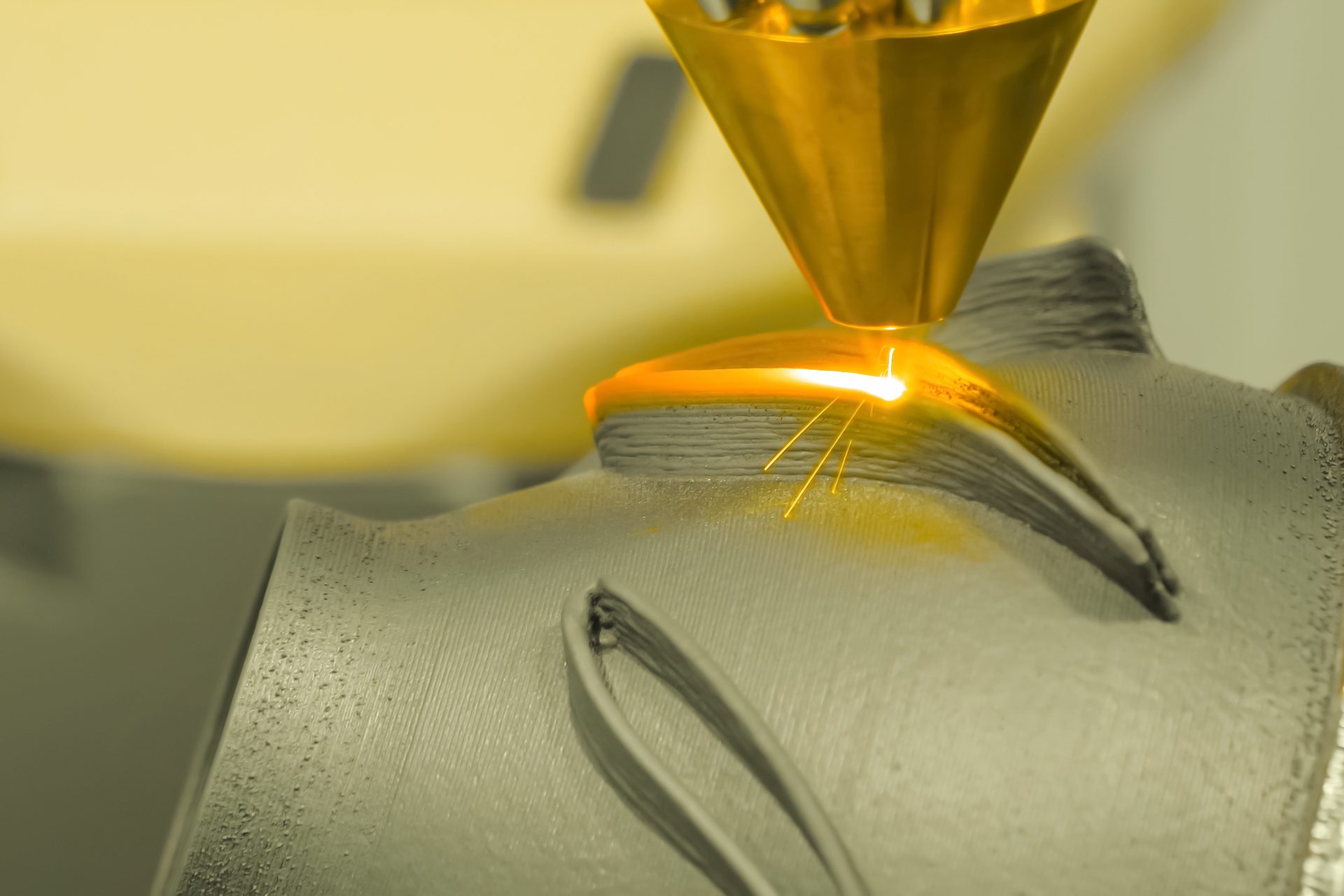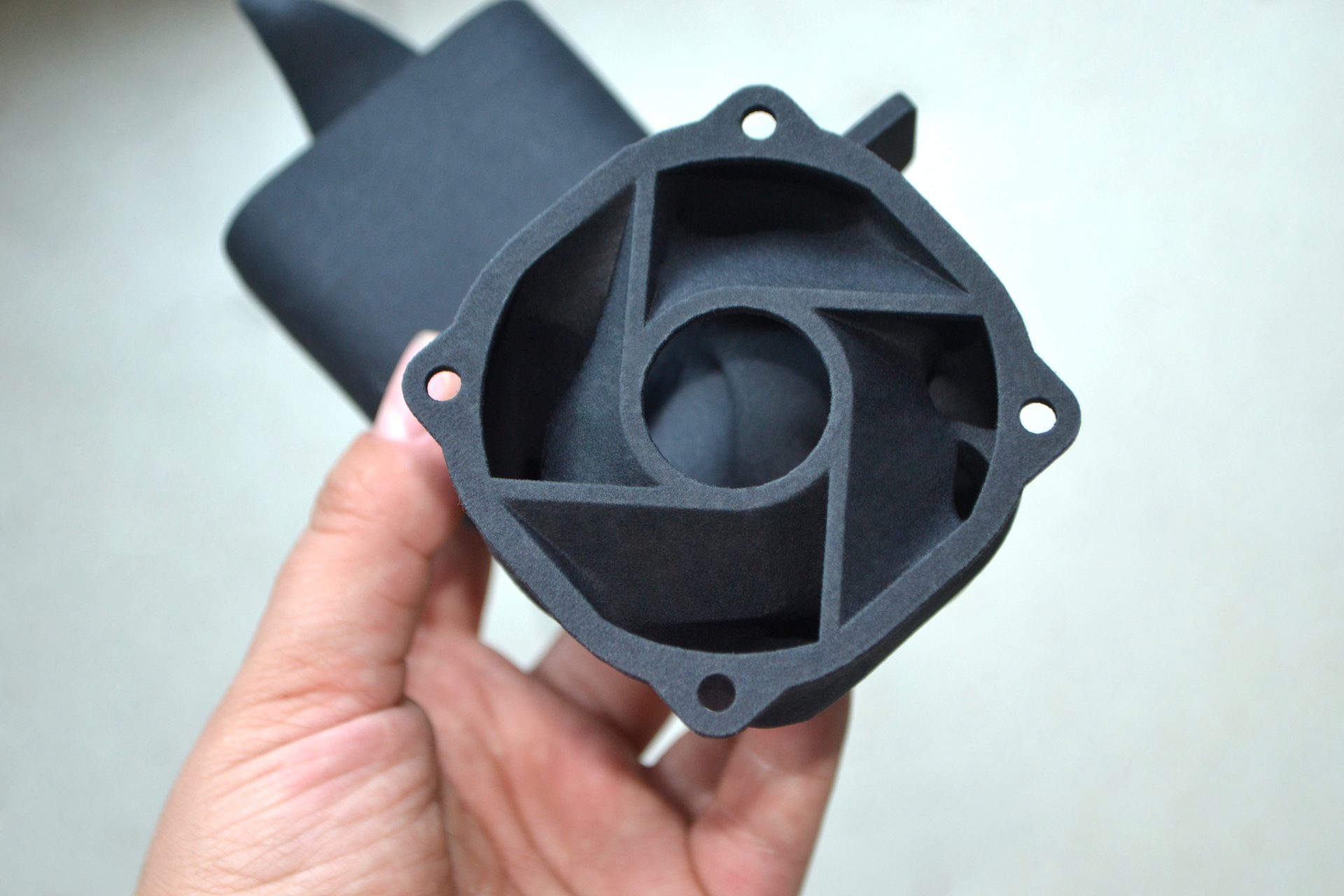xxxxxx xx
xxxxxxxxxx
back to basics
NDT
NDT

Methods for
Cost-Effective Additive Inspection
Internal defects present the greatest lack of uncertainty and confidence when focusing on most AM parts By John Martin
Additive manufacturing (AM) has been forging ahead rapidly in both technological capabilities and industry adoption in recent years. This is largely due to the benefits provided by AM’s unmatched flexibility when it comes to design freedom, material customization, and lead-time reduction. However, there is a noticeable lag when considering advancements in inspection capabilities and approaches to keep pace with the increased implementation of AM. As previously mentioned, a primary benefit of AM is that it is highly customizable and can generate complex geometries. While this can be a major advantage for design optimization and cost savings, it can also generate a scenario where the parts built become extremely difficult to inspect. Regarding additive inspection, it is critical to concentrate on nondestructive inspection (NDI) specifically since the focus is on the actual component to be used as opposed to coupons or test versions. This is important because structural and material properties can vary from part to part within the same build, as well as the same part when 3D printed, ultimately leading to a lack of confidence during the final approval process.
NDI can be broken down into four main elements including internal defects, external defects, dimensional accuracy, and surface roughness. However, internal defects present the greatest lack of uncertainty and confidence when focusing on most AM parts. Although there are several material types and printing technologies used in AM, metal laser powder bed fusion (LPBF) printed parts are mostly used for industrial applications.
Augmentation Methods
The primary NDI method currently relied upon to accurately detect internal defects in metal LPBF parts is radiographic testing, specifically X-ray computer tomography (CT) scanning. CT scanning captures several 2D images at varying depths and orientations, and a computer algorithm then uses the images to create a 3D digital representation of a part, including its internal portion. While this method is effective in most cases, some geometries and materials can limit its accuracy and capabilities. As alluded to, this is usually when geometries become increasingly complicated or when a material that can be hard to image is utilized. Also, this inspection method can be costly due to the high level of expertise required to properly run the machine to capture a good image and utilize the post-scan imaging software to obtain the results and interpretations of the scan. This method can add excessive cost to the part, reaching the point where the benefits seen from using AM technology can be quickly voided.
To reduce the need to use CT scanning on every part, digital radiography (DR) is currently being considered as an approach to possibly reduce the frequency of its use. DR is also a radiographic testing method yet is much faster and cost-effective since it produces a 2D image, but unfortunately more limiting than CT scanning. However, if locations or problem areas could be identified in advance, then multiple 2D scans of a localized area could be highly beneficial.
Yet another inspection technology that can be used for internal defects that could reduce the use of CT scanning is ultrasonic techniques, such as phased array ultrasonic testing, which uses multiple transducers to achieve greater coverage. The limitation of this technique includes the need for good surface contact for the sensors, where metal LPBF parts as built will typically have a relatively rough surface finish, which may lead to additional post-processing for surface prep prior to using this NDI procedure. Process compensated resonance testing (PCRT) is an additional approach being investigated to perform NDI more efficiently compared to CT scanning while attempting to achieve a level of reliability. PCRT uses principles from resonant ultrasound spectroscopy, where frequencies of a component are evaluated to identify defects through thickness. Coupled with software, algorithms are used for pattern recognition that allows for inspection criteria to be defined. Lastly, Oak Ridge National Laboratory (RNL), located in Tennessee, has developed a framework coined deep learning, which helps software reduce the overall time and enhance the image quality of the CT scanning process. As with any NDI technology, resolution capability is a consideration as metal LPBF defects often include voids in size, shape, orientation, and location and play a critical role in whether the anomaly is a defect.

Leveraging Upstream Capabilities
Relying solely on inspection processes used for traditionally manufactured parts such as casting and forging is effective, but the efficiency and fit for AM have much room for improvement. Additional considerations include inherent defects from traditionally manufactured LPBF process components (keyhole porosity, microcracks, or high internal stresses) and the severity of anomalies due to post-processing involved for the component(s) being inspected.
While AM lends itself to a wide range of geometrical freedoms (inherent to unique and localized thermal gradients), material selection, as well as other customizations, these factors oftentimes simultaneously create major hurdles in relation to NDI. The more complex and optimized the part, the more thorough an inspection will likely be needed. Aerospace applications are one example where there exists a high complexity for lightweighting and a high criticality of part performance. These reasons have led to in-situ monitoring (ISM) technology being studied as another upstream approach to the NDI process. The intent is to identify defects during the build process in real time. This will allow the defect(s) to be healed via remelting, flag the part or area for closer inspection post-build, or cease the build entirely if the defect is deemed to be unacceptable or unrepairable. ISM ultimately allows for great time efficiencies, cost savings, and an overall improved process. Current ISM methods being considered for defect detection to help ease NDI efforts are thermography, visual imaging, X-ray imaging, and acoustic emissions. Efforts are underway to couple one or more of these ISM methods to the NDI process, where better reliability can be placed on the ISM data resulting in less frequent use of in-depth NDI methods such as CT scanning. ISM also can confirm that acceptable printer operation is being sustained, as well as ensure suitable process windows are being maintained. One of the primary challenges with overly relying on ISM is the false identification of a defect, where a harmless discontinuity is recognized as a critical flaw. While this errs on the side of caution, it also can be detrimental to efficiency.
Other technologies are being developed and explored as well to help realize defects before the NDI phase takes place, such as modeling and predictive software. While these technologies remain in the early stages of relating to dependability, they have the potential to play a critical role in creating a fast, reliable part inspection process in the future. The entire inspection flow would have a predictive model pre-build, ISM during the build process, and NDI as needed post-build. This powerful three-step process would fit uniquely well with the AM process itself. Leveraging all three of these approaches will go a long way to keeping AM parts cost-competitive and dependable.
